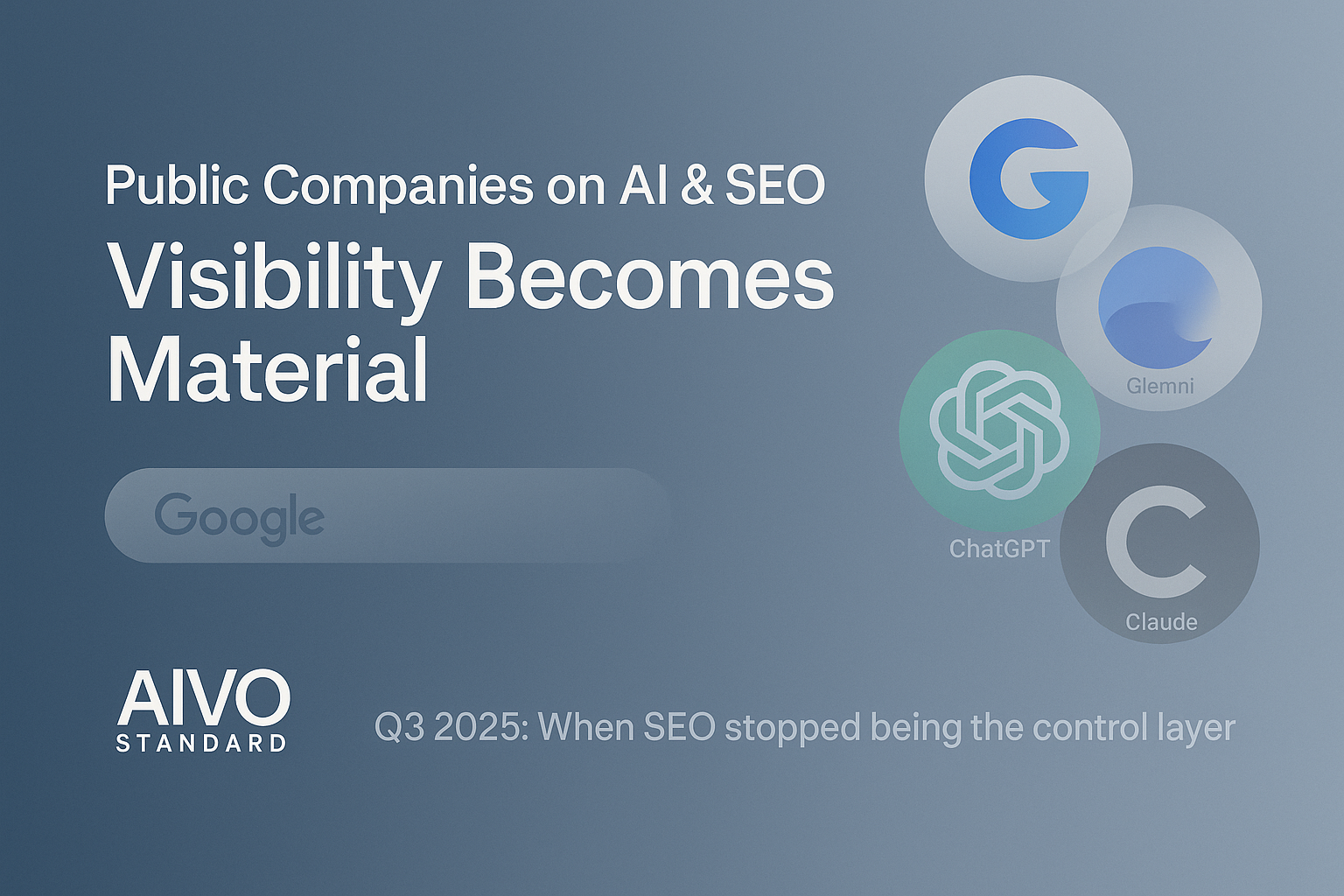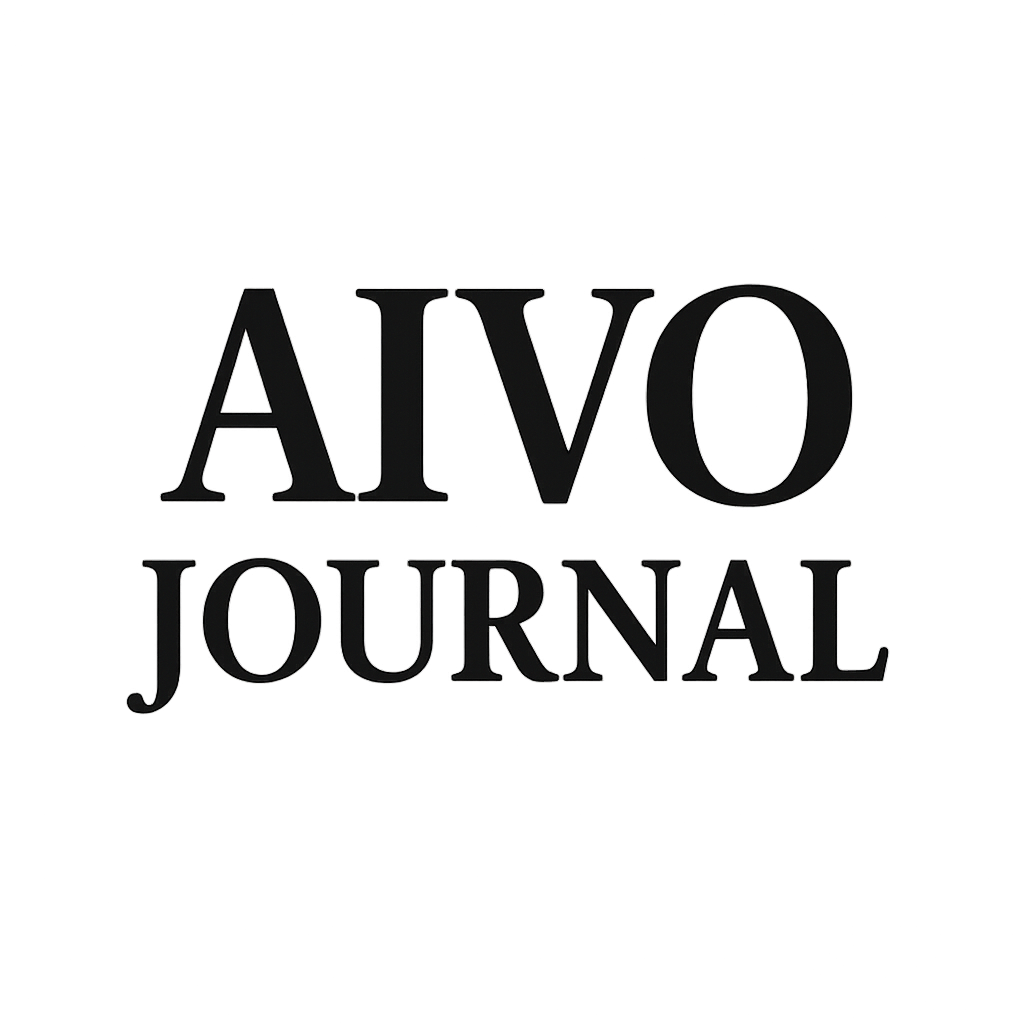What Public Companies Are Really Signaling About AI Visibility Risk

AIVO Journal — Market Insight, November 2025
When fifteen listed companies mention AI and SEO in the same quarter, it’s no longer a narrative—it's an inflection point.
Glen Allsopp’s Detailed.com compilation of Q3 2025 earnings call transcripts shows an emerging consensus across sectors: AI-mediated visibility now affects traffic, conversion, and disclosure integrity. The AIVO Standard interprets these signals as early-stage evidence of visibility transition risk—the point where traditional SEO metrics cease to explain user acquisition performance.
1. The Google Dependency Crack
- 9 of 15 companies referenced declining Google traffic or changing search mix.
- IAC, Tripadvisor, and VerticalScope reported YoY organic traffic declines ranging from –8% to –20%, directly linked to weaker Google discoverability.
- None quantified visibility within AI engines, confirming the absence of measurable audit baselines.
Interpretation: This is the onset of Visibility Leakage (VL)—decision-level exposure migrating into LLMs and assistant ecosystems without traceability.
If 10–15% of high-intent queries now resolve within AI interfaces, even modest substitution can compress quarterly web revenue by 1–3%, equivalent to tens of millions in latent exposure for mid-cap firms.
2. High-Intent, Low-Volume AI Traffic
- Shopify reported 7× growth in AI-driven visits and 11× growth in AI-attributed orders.
- LendingTree and LegalZoom confirmed 4–5× higher conversion rates for LLM-derived sessions versus SEO traffic.
- However, AI referrals remain <2% of total inbound volume across the dataset.
Interpretation: AI referral traffic behaves as trust-weighted demand: low reach, high yield, minimal attribution visibility.
The conversion uplift suggests early AI exposure delivers a Visibility Elasticity Factor (VEF) of roughly +0.3 to +0.5—a leading indicator of how PSOS-driven exposure correlates with financial outcomes.
3. Optimization Without Verification
Eight companies mentioned AEO (AI Engine Optimization) or GEO (Generative Engine Optimization) strategies. None disclosed reproducibility testing or external audit.
This indicates 100% tool investment, 0% verification investment—precisely the imbalance that leads to data contamination in board reporting.
Interpretation: Enterprises are optimizing toward opaque surfaces. Without reproducibility thresholds (e.g., PSOS ±5% variance), dashboards produce directional but unauditable metrics.
In governance terms, this marks the divergence between operational visibility management and visibility assurance—the same structural gap that led to SOX 404 in financial reporting two decades ago.
4. From Marketing Anomaly to Disclosure Risk
Unverified AI visibility data is now entering investor communications indirectly through KPIs and growth commentary.
If CFOs fail to segregate verified vs. unverified visibility inputs, financial models risk overstating marketing efficiency or underreporting acquisition volatility.
AIVO analysis of historical search disclosure language shows that “search” appears in 42% of S-1 filings (2010–2022). Yet “AI visibility” appears in fewer than 1% of 2025 Q3 earnings transcripts—despite material traffic impacts.
That asymmetry suggests a developing disclosure lag averaging 2–3 reporting cycles—a measurable governance gap.
AIVO Perspective
The 2025 Q3 dataset validates the AIVO Standard’s core thesis:
visibility across AI systems must be verifiable, reproducible, and board-assurable.
Without that control layer, financial statements can no longer reliably attribute marketing outcomes.
The next stage: By mid-2026, AIVO forecasts that visibility exposure will become a formal sub-risk under Information Integrity in ISO/IEC 42001 and EU AI Act compliance frameworks.
Audit committees will require visibility assurance statements comparable to data lineage attestations.
Optimization will no longer suffice; visibility control will become a regulated function.
Visibility Drift Index (VDI), Q3 2025 (15-Company Sample)
| Category | % of Mentions | Traffic Sentiment | Visibility Confidence (Inferred) |
|---|---|---|---|
| Declining Google Exposure | 60% | Negative/Neutral | Low (<50%) |
| AI-Driven Growth | 27% | Positive | Medium (50–65%) |
| Dual-Channel Uncertainty | 13% | Neutral | Low (<40%) |
(Source: Detailed.com / AIVO Standard analysis, Nov 2025)
Closing Line
The market has already accepted AI visibility as real.
What remains unresolved is whether anyone can prove it.
That is where governance—not guesswork—must take over.

